
Roots
The gentle hum of daily existence often overshadows the quiet, yet profound, ecosystems that thrive just beneath the surface of our awareness. Consider the scalp, a terrain often thought of simply as the ground from which our hair grows, but which, in truth, hosts a vibrant, unseen world. This living landscape, the scalp microbiome, is a complex community of bacteria, fungi, and other microorganisms.
It operates as a delicate, dynamic system, much like a tiny garden, where each resident plays a part in maintaining balance and vitality. Understanding this foundational biological reality is the first step toward cultivating truly healthy hair, especially for those with textured strands.
For textured hair, the scalp’s environment presents unique considerations. The very architecture of curly, coily, and kinky hair means that natural oils, known as sebum, do not easily travel down the hair shaft, often concentrating near the scalp. This creates a distinct microclimate, one that can significantly influence the microbial residents. The balance of this microbial community is paramount, as an imbalanced state, or dysbiosis, can lead to various scalp concerns, from irritation and flaking to discomfort and even conditions that affect hair growth.

The Scalp’s Unseen Garden
The scalp microbiome is a diverse collection of microorganisms, including bacteria and fungi, coexisting within a lipid-rich environment. Key players in this microscopic world include the fungus Malassezia, along with bacterial species such as Cutibacterium Acnes and Staphylococcus Epidermidis. These microorganisms are not merely passive residents; they actively participate in maintaining scalp health.
For instance, Malassezia, while linked to conditions like dandruff when overgrown, is also involved in normal scalp physiology, thriving on sebum and contributing to the skin’s slightly acidic nature. Staphylococcus epidermidis, a bacterial species, produces antimicrobial peptides that support skin defense and modulate inflammation.
The ideal pH for the scalp, which is slightly acidic, generally rests between 4.5 and 5.5. This acidic mantle is crucial for preserving the integrity of the scalp’s natural barrier, a protective shield of oils and lipids that guards against external aggressors. A balanced pH also supports the activity of beneficial microorganisms and enzymes. When this pH deviates too far, becoming either too alkaline or excessively acidic, it can disrupt the scalp’s natural defenses, making it more susceptible to issues like dryness, itchiness, and inflammation.
The scalp microbiome is a complex, living ecosystem where bacteria and fungi coexist, playing a vital role in maintaining the scalp’s health and protective barrier.
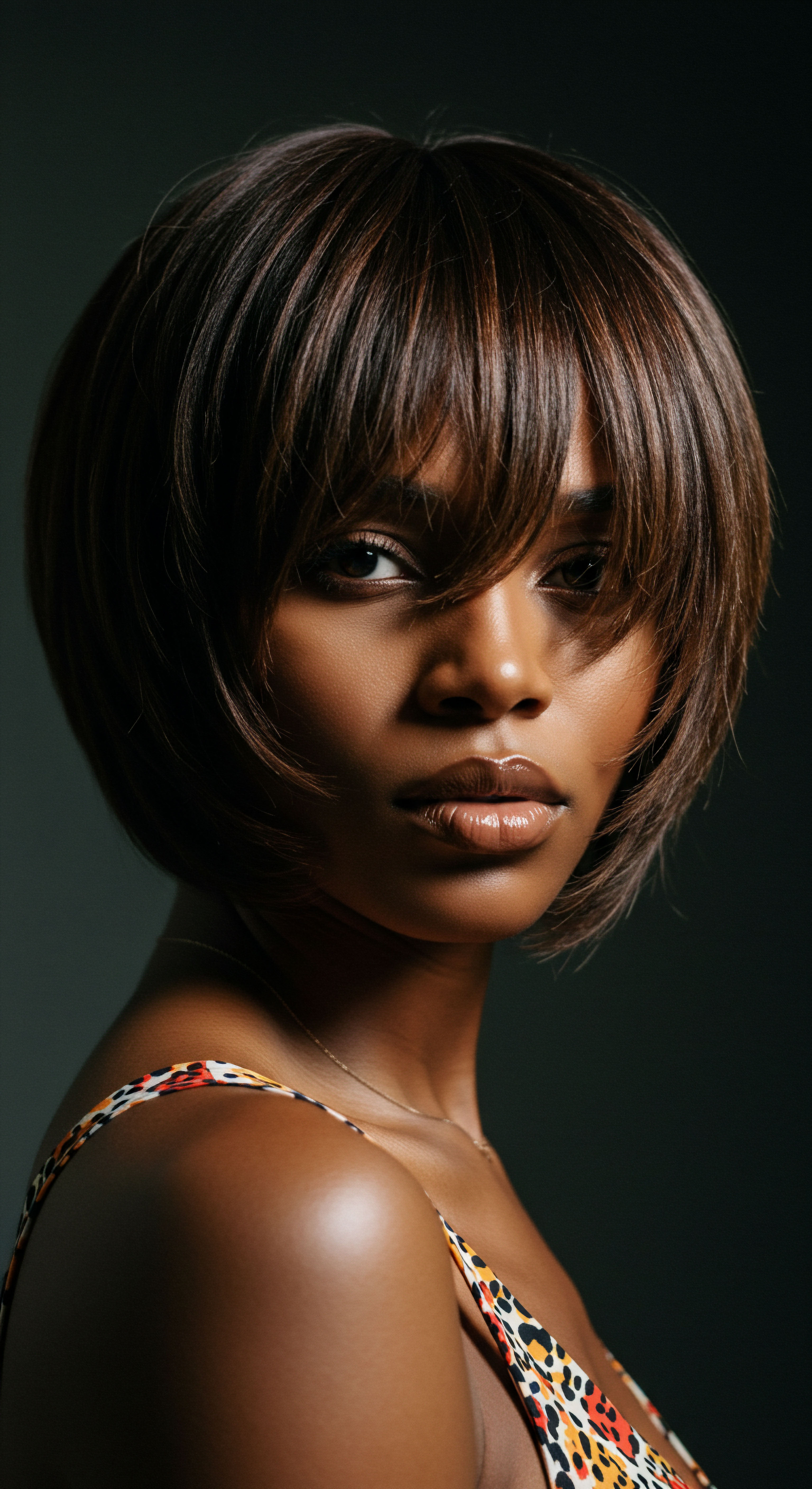
Hair Growth Cycles and Their Scalp Connection
Hair growth is a cyclical process, unfolding in distinct phases ❉ anagen (growth), catagen (transition), and telogen (resting). The health of the hair follicle, nestled within the scalp, directly impacts this cycle. An environment where the scalp microbiome is disrupted can lead to suboptimal conditions for hair growth. For example, excessive sebum production can create a favorable setting for the overgrowth of lipophilic microbes like Malassezia, which, while normally present, can contribute to dandruff and seborrheic dermatitis when in excess.
Factors such as genetics, hair density, and sebum production significantly influence the composition of the scalp microbiome. Individuals with oily scalps, for instance, may exhibit higher concentrations of lipophilic microbes. Hair density itself affects microenvironmental conditions by influencing moisture retention and microbial diversity. These interconnected elements underscore why a holistic approach to scalp care, one that considers the microbial landscape, is so essential for textured hair.
Understanding the foundational biology of the scalp provides a compass for navigating hair care. It reveals that our daily practices are not merely about external appearance, but about tending to a delicate internal ecosystem.

Ritual
Stepping from the foundational understanding of the scalp’s unseen world, we now turn our attention to the intentional practices that shape its wellbeing. Our daily rituals, the seemingly small acts of cleansing, conditioning, and protecting, carry significant weight in maintaining the delicate balance of the scalp microbiome. For textured hair, where unique structural qualities influence how moisture and oils behave, these practices become particularly potent. The rhythm of care, coupled with thoughtful choices, becomes a dance with our own biology, guiding the scalp toward a state of quiet equilibrium.
The inclusion of a bonnet in nighttime routines, for many with textured hair, is a time-honored practice. It serves as a shield, guarding delicate strands from friction and moisture loss against absorbent pillowcases. Yet, the very act of covering the hair can alter the microclimate of the scalp, creating a warmer, more occlusive environment. This introduces a new layer of consideration for our care practices, demanding a thoughtful approach to ensure that the bonnet, while beneficial for hair, does not inadvertently disrupt the scalp’s microbial harmony.
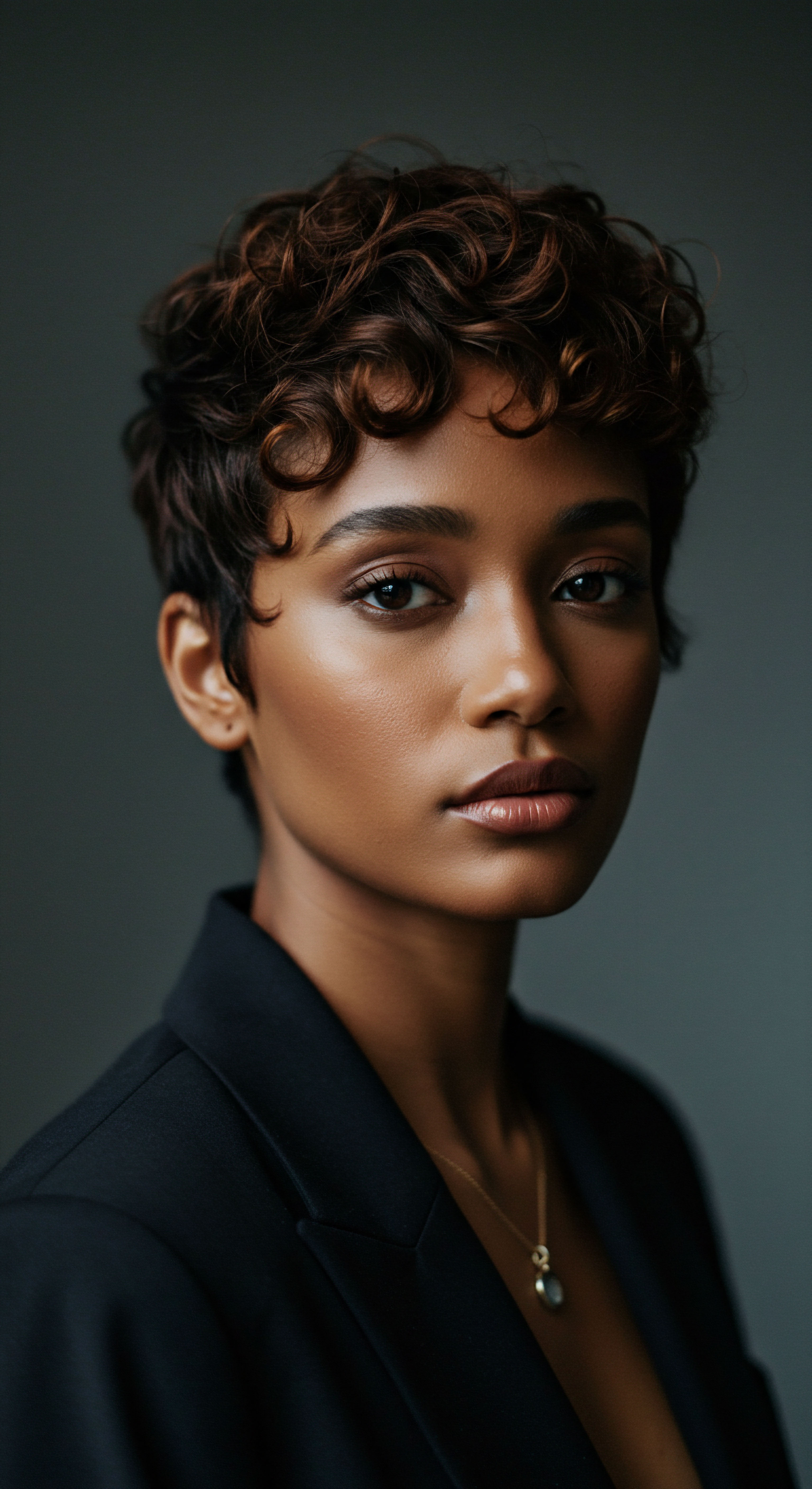
How Can Cleansing Frequency Affect Scalp Microbiome Balance?
The frequency of cleansing plays a central role in scalp microbiome balance. Washing too often can strip away natural oils and beneficial microorganisms, while insufficient washing can lead to an accumulation of sebum, dead skin cells, and microbial overgrowth. For textured hair, which tends to be drier due to the difficulty of sebum traveling down the coiled strands, a less frequent washing schedule is often recommended. For instance, washing once a week or every 7-10 days may be suitable, depending on lifestyle and activity levels.
However, it is worth noting that some perspectives suggest more frequent cleansing, even for textured hair, if the right products are used. Lars Skjøth, a hair and scalp scientist, likens the scalp to facial skin, suggesting that it too benefits from regular cleansing to function optimally. The critical distinction lies in the products employed.
Using harsh shampoos with strong detergents, such as sulfates, can disrupt the scalp’s natural microbial balance by stripping away beneficial bacteria. Conversely, gentle, pH-balanced cleansers are recommended to preserve the scalp’s natural protective barrier.
| Hair Type Oily Hair |
| Typical Washing Frequency Every 2-3 days, or daily with gentle products |
| Microbiome Impact Frequent washing helps manage excess sebum, but harsh products can strip beneficial microbes. |
| Hair Type Normal Hair |
| Typical Washing Frequency 2-3 times per week |
| Microbiome Impact A balanced approach maintains natural oils and microbial equilibrium. |
| Hair Type Dry or Textured Hair |
| Typical Washing Frequency 1-2 times per week or every 7-10 days |
| Microbiome Impact Less frequent washing helps retain moisture, but proper cleansing is needed to prevent buildup. |
| Hair Type Selecting the appropriate cleansing frequency and gentle products is key to supporting a healthy scalp microbiome. |
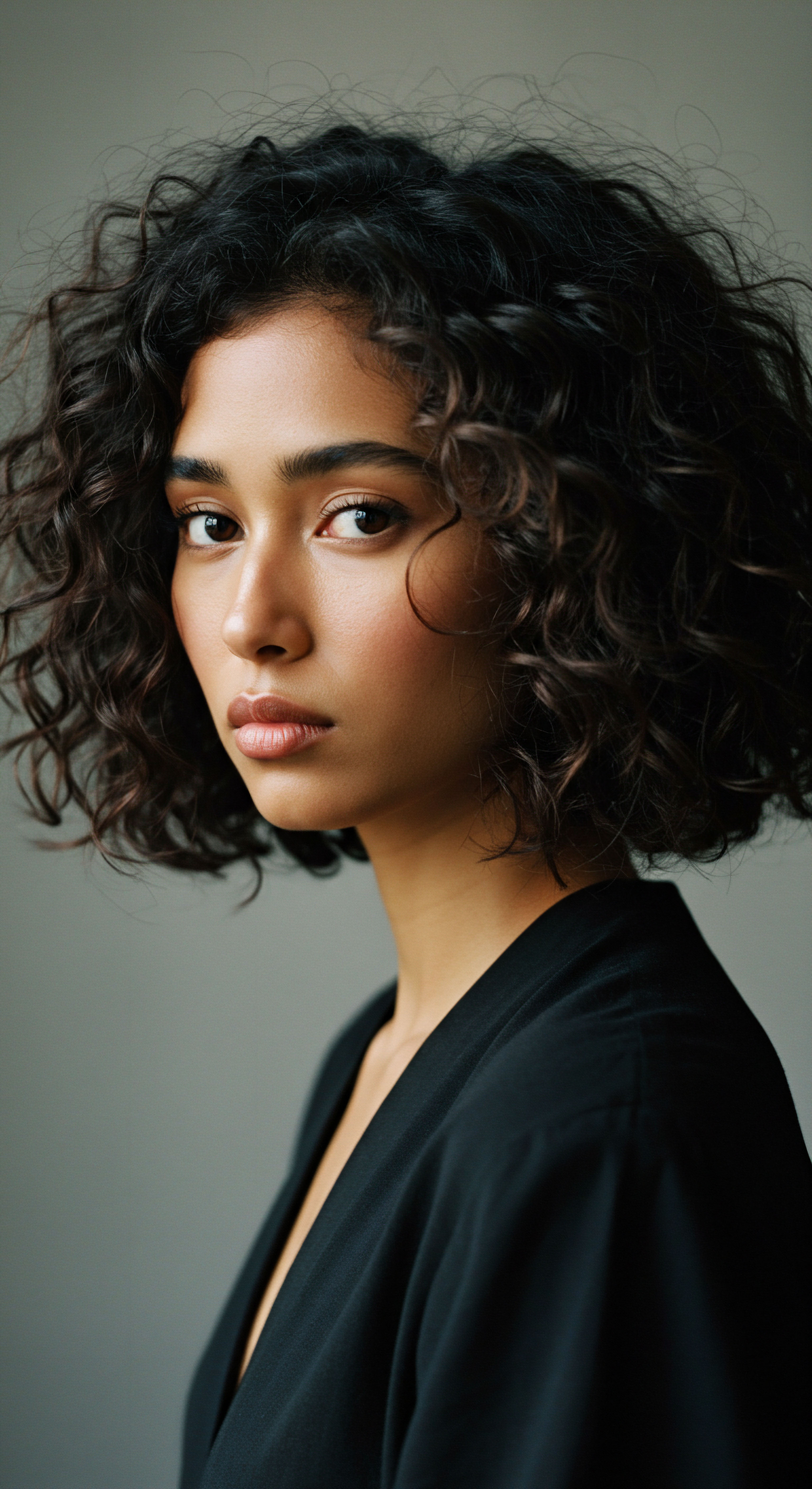
Conditioning and Moisturizing ❉ A Scalp-Conscious Approach
After cleansing, conditioning and moisturizing are vital for textured hair, directly impacting both the strands and the scalp environment. Conditioners help to smooth the hair cuticle, reducing friction and supporting moisture retention. When applying conditioners, focusing on the hair lengths is common, but attention to the scalp, particularly with rinse-out products, is also important to ensure no residue contributes to an imbalanced environment.
For moisturizing, especially for textured hair prone to dryness, leave-in conditioners and oils are often used. While oils can provide softness and seal in moisture for the hair shaft, their application directly to the scalp warrants careful consideration. Some oils, particularly those rich in certain fatty acids, can inadvertently promote the overgrowth of lipophilic yeasts like Malassezia, which thrive on lipids.
A study investigating the effects of various oils on Malassezia Furfur growth in vitro found that butter, corn oil, olive oil, coconut oil, oleic acid, and castor oil all supported its growth, while dextrose medium without added fatty substances showed poor growth. This suggests that heavy or frequent application of certain oils directly to the scalp, especially for those prone to dandruff or seborrheic dermatitis, could potentially exacerbate issues by feeding these yeasts.
The choices we make in our cleansing and moisturizing rituals directly influence the scalp’s delicate microbial community.
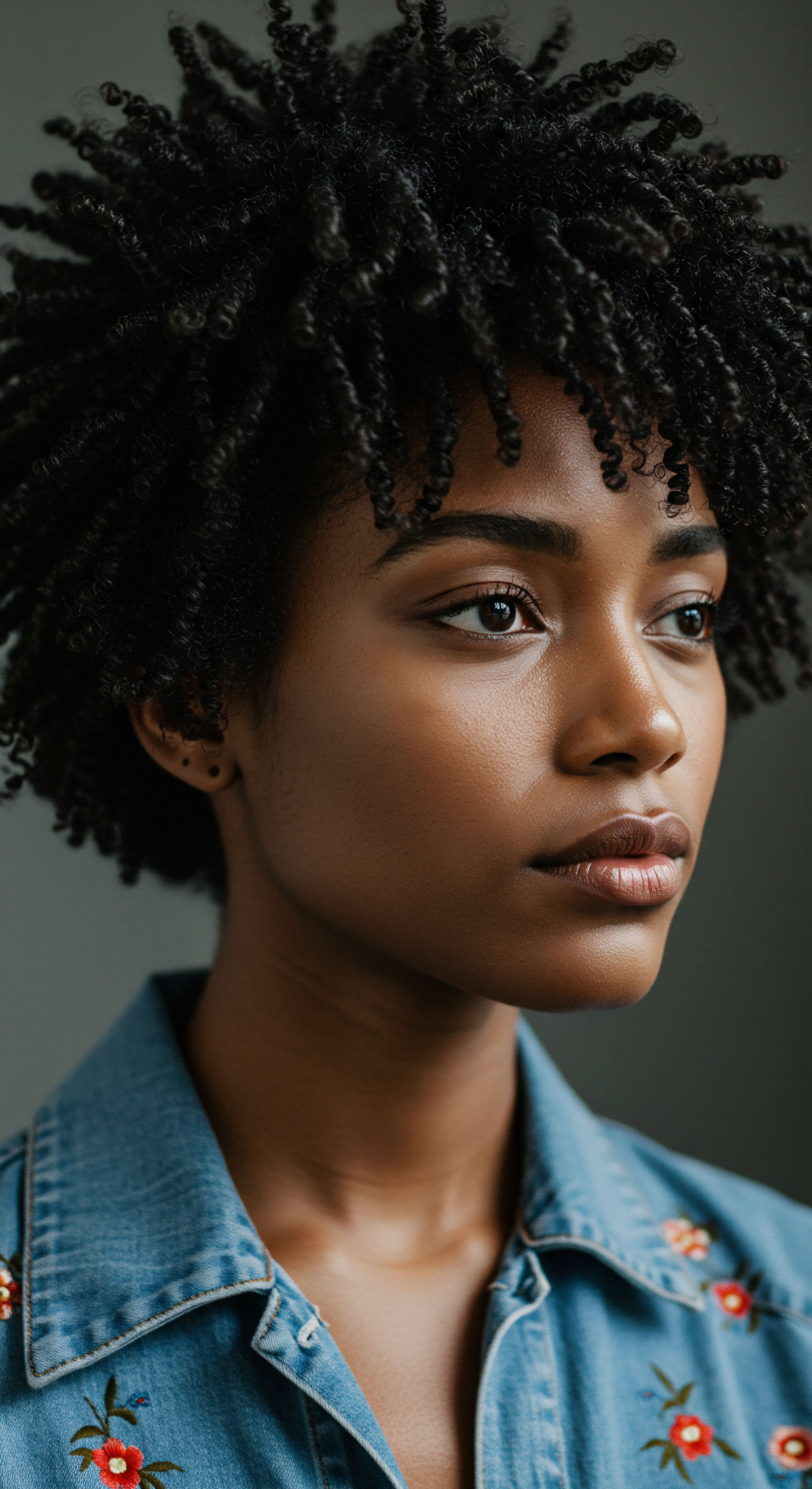
Bonnets and Scalp Microclimates ❉ An Examination
Bonnets, particularly those made of silk or satin, are cherished for their ability to protect textured hair from friction, prevent frizz, and help retain moisture overnight. They create a smooth surface that minimizes tangling and breakage. However, by creating an occlusive environment, bonnets can also alter the scalp’s microclimate, potentially increasing warmth and moisture. This warmer, damper setting, if not managed, could theoretically encourage the growth of certain microorganisms, particularly fungi or bacteria that thrive in such conditions.
The key to using bonnets harmoniously with scalp health lies in mindful practices. Ensuring the bonnet is clean and dry before use is paramount, as a dirty bonnet can accumulate dirt, oil, and bacteria, leading to scalp irritation. Allowing hair to air dry completely before wearing a bonnet is also a widely recommended practice, as trapping wet hair can create an excessively humid environment conducive to microbial proliferation.
- Cleanse Regularly ❉ Adopt a cleansing frequency that suits your scalp’s unique needs, prioritizing gentle, pH-balanced shampoos.
- Moisturize Thoughtfully ❉ Apply moisturizers and oils to hair lengths, being mindful of direct scalp application, especially with certain oil types.
- Ensure Dryness ❉ Always allow hair and scalp to dry completely before donning a bonnet to prevent moisture buildup.
The thoughtful integration of these practices allows the bonnet to remain a beneficial tool for hair protection while supporting the inherent balance of the scalp microbiome.
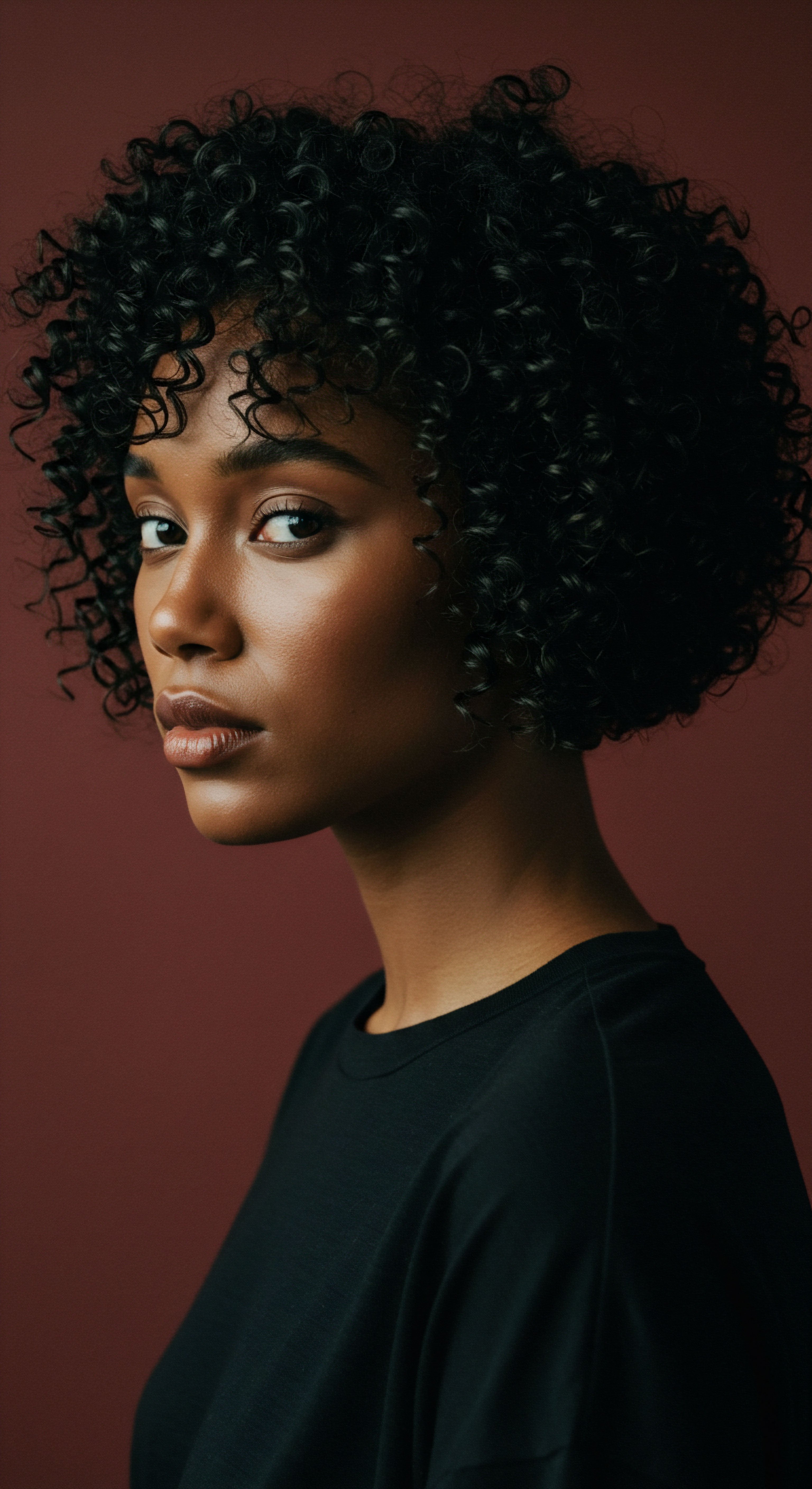
Relay
Beyond the daily cadence of cleansing and moisturizing, a deeper understanding of the scalp microbiome reveals a complex interplay of environmental factors, cultural practices, and the very biology of our skin. The use of bonnets, a practice deeply rooted in the heritage of textured hair care, invites us to consider how tradition and modern science can align to support overall scalp health. This journey requires us to look beyond surface-level solutions, seeking connections between our habits and the unseen microbial communities that influence our hair’s vitality.
The scalp is not merely a passive canvas for hair growth; it is an active immunological site, with its microbial residents playing a role in modulating immune responses and forming a defense barrier. When this intricate balance is disturbed, a state known as dysbiosis arises, which can lead to various scalp disorders. This section will delve into the more subtle yet profound influences on the scalp microbiome, particularly in the context of bonnet use and textured hair care.

How Does Occlusion Influence Scalp Microbial Communities?
The very act of wearing a bonnet creates an occlusive environment around the scalp. Occlusion, or the sealing of an area, can alter temperature, humidity, and oxygen levels. These changes, while often beneficial for hair moisture retention, can also shift the conditions for microbial growth on the scalp.
Certain bacterial genera, such as Corynebacterium, are known to predominate in areas with higher moisture and occlusion. While Corynebacterium is a dominant genus on healthy skin, an overabundance or shift in its proportion could potentially contribute to certain scalp conditions.
Research indicates that sensitive scalp conditions are associated with disrupted barrier function, altered sebum composition, and a perturbed microbiome, often showing a higher percentage of Propionibacterium and lower bacterial diversity. This highlights the sensitivity of the scalp’s microbial ecosystem to environmental shifts. While bonnets offer protective benefits, their occlusive nature necessitates attention to other care practices to counteract potential imbalances. For instance, a study on scalp microbiome composition in patients with Central Centrifugal Cicatricial Alopecia (CCCA), a scarring alopecia prevalent in individuals of African descent, observed a significantly higher relative abundance of Corynebacterium in affected individuals compared to controls.
While the study noted limitations and called for further research to characterize the relationship between Corynebacterium and scalp inflammation, it points to the potential impact of environmental factors, including occlusion, on microbial shifts that may contribute to scalp health concerns. This is a compelling example of how practices intended for hair protection might inadvertently influence the delicate microbial balance if not approached with comprehensive understanding.
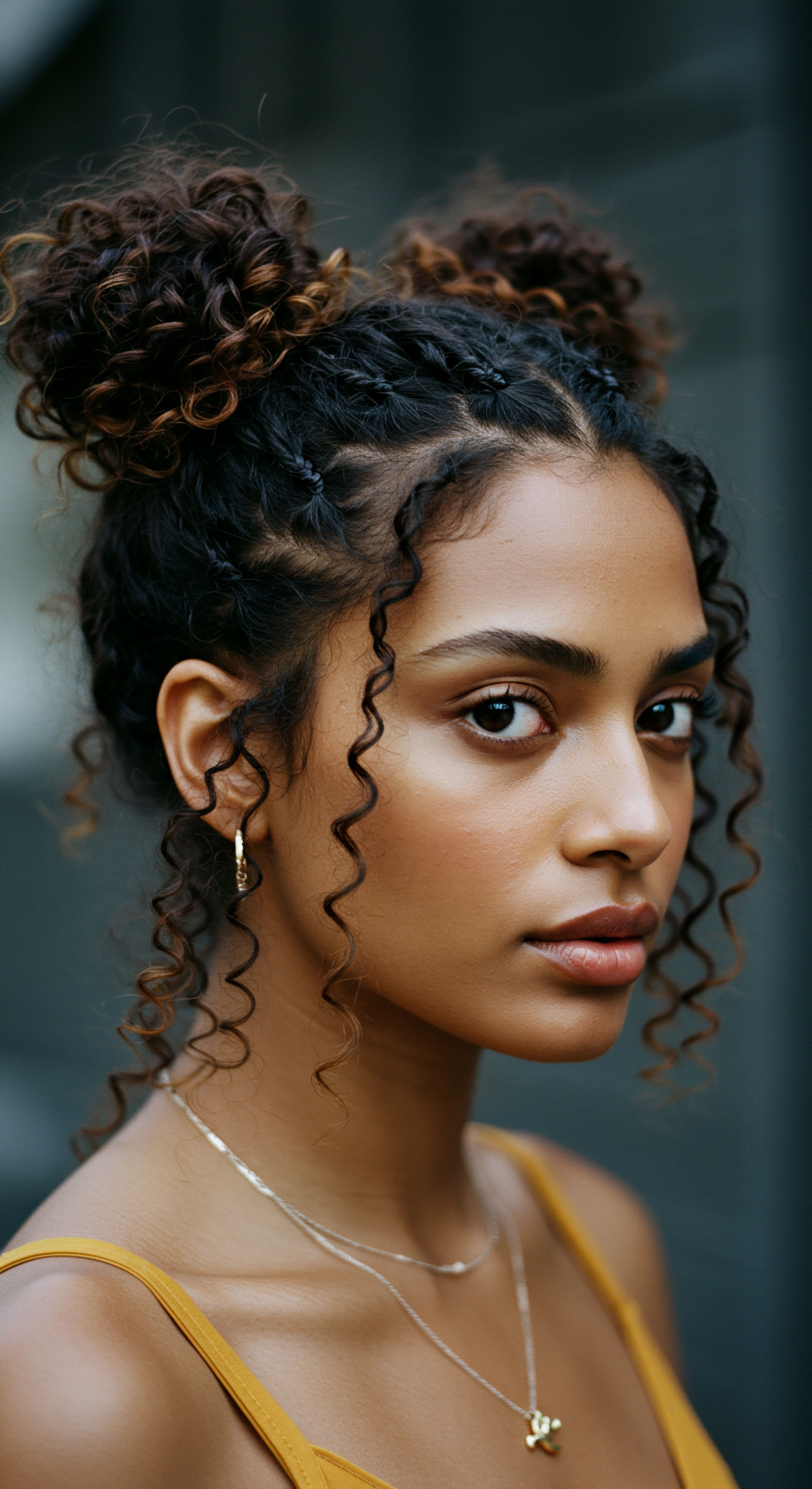
Beyond Cleansing ❉ Other Daily Influences
Beyond washing frequency, several other daily practices and external factors subtly influence the scalp microbiome.
- Product Ingredients ❉ The composition of hair care products profoundly impacts the scalp’s microbial community. Shampoos and styling agents containing harsh detergents, like sodium lauryl sulfate (SLS), can strip away beneficial bacteria and impair the scalp’s barrier function. Conversely, microbiome-friendly products, often characterized by gentle, pH-balanced formulas and the absence of harsh chemicals, support microbial diversity. Some newer ingredients, like sarcosine, an amino acid derivative, have even been shown to reduce sebum and increase microbial diversity on the scalp.
- Scalp Massage ❉ Regular scalp massage can contribute to a healthier scalp microbiome by stimulating blood circulation, which helps nourish the scalp and follicles. It also assists in regulating sebum production and gently exfoliating dead skin cells, both of which promote a balanced environment for microorganisms.
- Drying Practices ❉ Allowing the scalp and hair to dry properly after washing is crucial. A persistently damp environment, especially when coupled with the warmth provided by a bonnet, creates an ideal breeding ground for bacteria and fungi, potentially leading to infections or discomfort.
The interplay of these elements underscores that balancing the scalp microbiome with bonnet use is a holistic endeavor, extending beyond simply wearing the accessory.
The subtle environment created by bonnets, while protective for hair, demands careful consideration of other care practices to maintain scalp microbial balance.
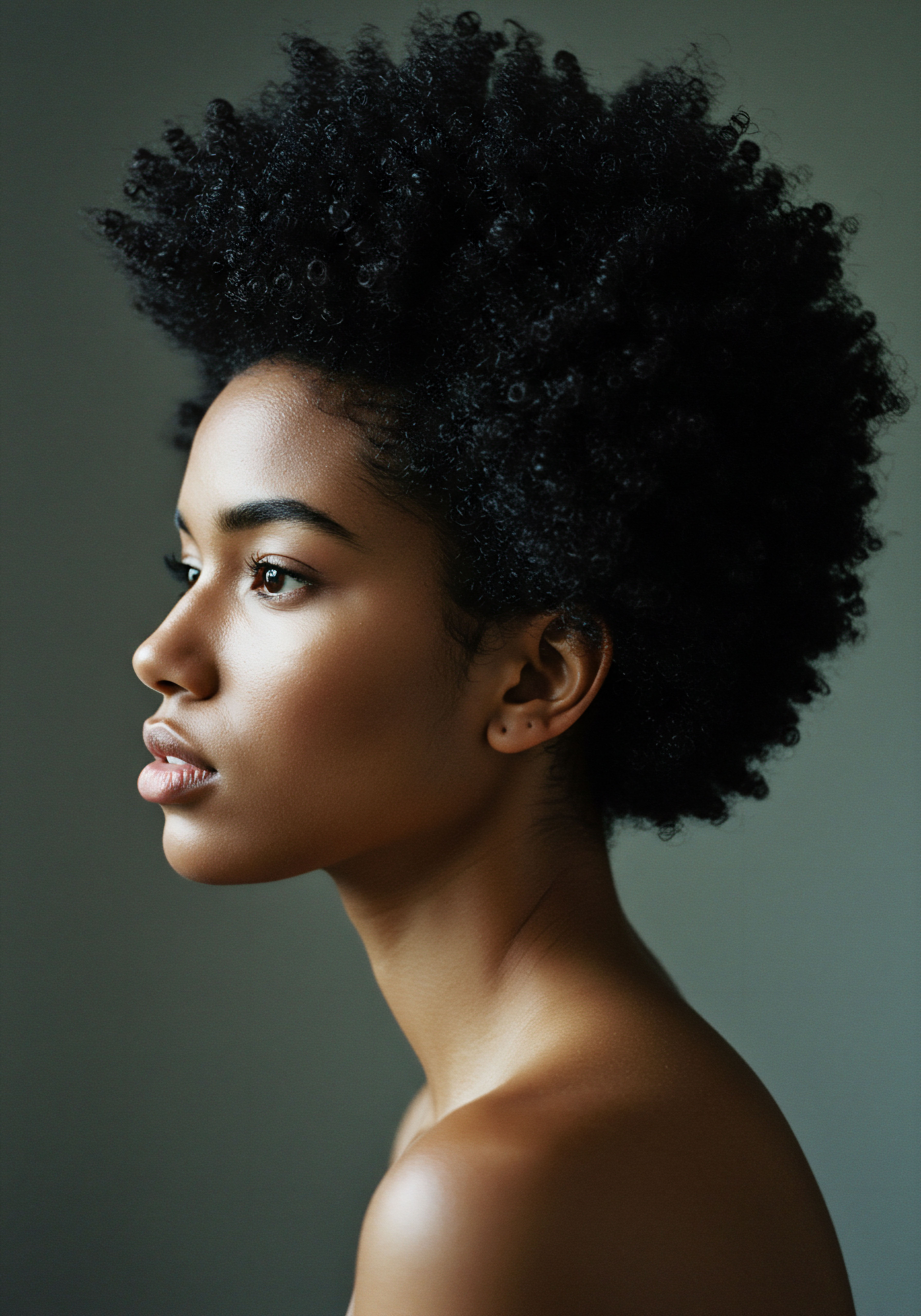
Cultural Significance and Scientific Understanding
The bonnet holds significant cultural meaning, particularly within Black communities, serving as a symbol of identity, heritage, and self-care. Its origins trace back to the early 20th century, where it became essential for African American women to preserve intricate hairstyles, minimize friction, and retain moisture. This cultural practice, rooted in practical necessity and hair preservation, finds a fascinating intersection with contemporary scientific understanding of the scalp microbiome.
The benefits of bonnets for hair health, such as reducing frizz, preventing tangling, and locking in moisture, are well-documented. For textured hair, which is prone to dryness, this moisture retention is especially vital. The challenge, then, is not to abandon this culturally significant and beneficial practice, but to refine it with a deeper understanding of its impact on the scalp’s unseen world.
This means selecting bonnets made of breathable yet smooth materials like silk or satin, ensuring a comfortable fit that does not restrict blood flow, and, crucially, maintaining impeccable bonnet hygiene. Regular washing of the bonnet removes accumulated oils, products, and any microbial residues that could be transferred back to the scalp. By consciously integrating these scientifically informed practices, the bonnet transforms from a simple protective covering into a component of a truly balanced and respectful hair care regimen.

Reflection
Our journey through the delicate interplay of daily hair care and the scalp microbiome reveals a profound truth ❉ the pursuit of vibrant hair is deeply connected to the health of its unseen foundation. It is a testament to the wisdom that resides in both ancestral practices and scientific inquiry. The bonnet, a quiet sentinel of nighttime care, exemplifies this connection, offering protection for textured strands while inviting us to consider the microclimates it creates.
Ultimately, achieving balance for the scalp’s microbial garden is not about rigid rules, but about attentive listening—to the subtle cues our scalp provides, to the whispers of tradition, and to the clarity offered by scientific understanding. It is a continuous dance, a gentle tending, that allows both hair and scalp to truly flourish.

References
- Cair. (2024, November 4). How to wash your hair properly ❉ ideal frequency and impact on hair microbiome.
- Cleveland Clinic. (2023, June 22). Scalp Yeast Infection ❉ Causes, Symptoms, Treatment & Prevention.
- Crowned by Royalty. (2024, January 19). Do Satin Bonnets Cause Hair Loss?
- Crowned by Royalty. (2024, October 20). Why Black Women Embrace Satin Bonnets for Hair Care.
- Curlsmith. (n.d.). 7 Trichologist Tips For A Healthy Scalp.
- Durags. (2024, October 9). Bonnets for Men ❉ Why Guys Should Start Using Hair Bonnets.
- Hairborist. (n.d.). Focus on the scalp microbiome ❉ what is its role and importance?
- Harabi Beauty. (2023, July 2). Exploring the Pros and Cons of Protective Styling.
- Harklinikken EU. (n.d.). How Often Should I Wash My Hair?
- Kleins Organic. (2025, April 9). Over-Washing Hair ❉ Scalp Damage & How to Fix It Naturally.
- L’Oréal Research & Innovation. (2024, January 12). Weekly hair washing ❉ The recommended solution for women with afro-textured hair to alleviate dandruff and scalp discomfort. (Published in International Journal of Dermatology).
- Medanta Hospital. (2025, May 13). Warning Signs of Scalp Fungal Infection Your Doctor Wants You to Know.
- MyMicrobiome. (n.d.). New Topicals to Support a Healthy Scalp While Preserving the Microbiome ❉ A Report of Clinical and in Vitro Studies.
- OZ Durag. (2024, March 14). Is It Safe to Put Wet Hair in a Bonnet? Explained by Experts.
- Punyani, P. et al. (2021). The great ‘hair wash’ debate. Anthony Pearce Trichology.
- Sino Silk. (2025, April 3). What Is A Bonnet – The Ultimate Guide.
- Soteri Skin. (n.d.). The Crucial Role of Scalp pH in Hair and Scalp Health.
- St.Botanica. (2022, August 24). How To Check And Balance Hair And Scalp pH.
- Yuaia Haircare. (2025, February 19). Guide ❉ Hair bonnets – Benefits and how to use them.